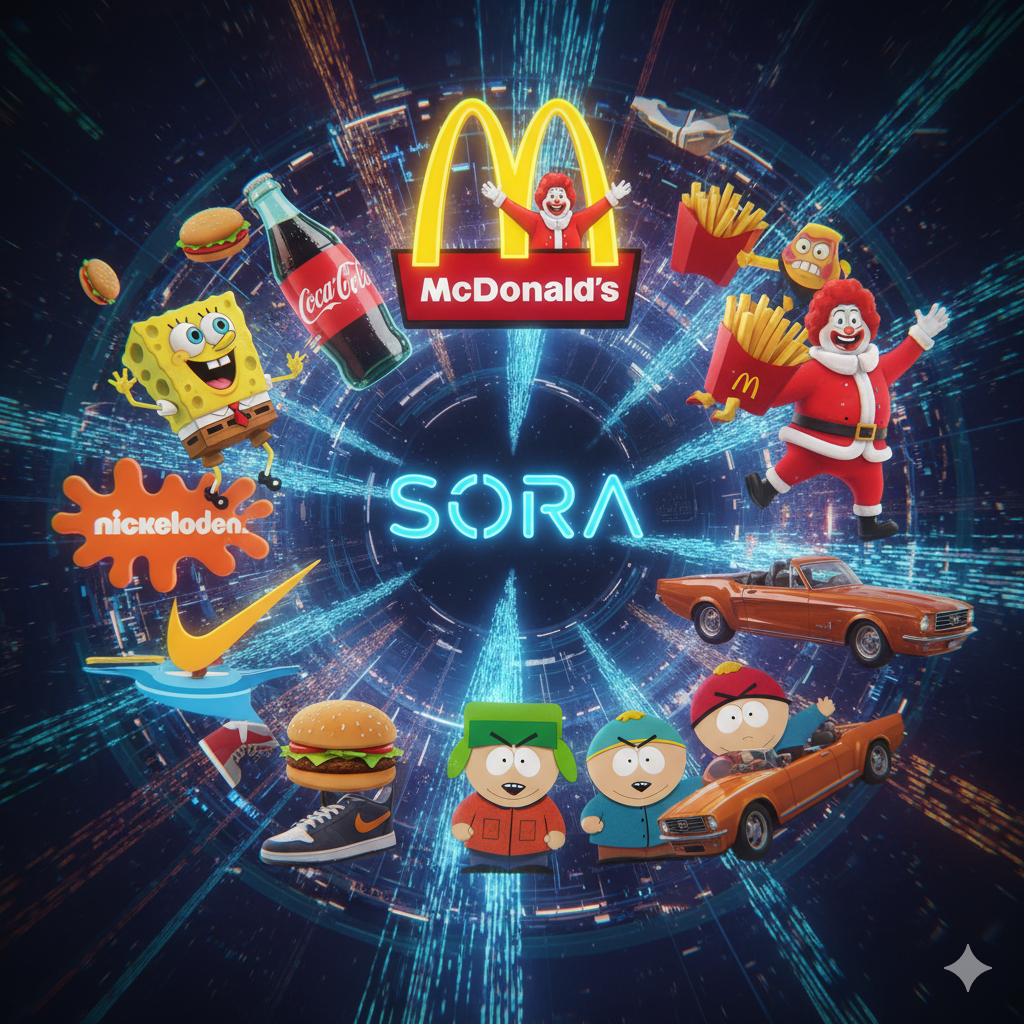The Sora Conundrum: When Brands Let Go of the Reins
The rise of text-to-video AI is forcing a historic choice for marketers: relinquish control or risk irrelevance.

The internet was left speechless by the first demos of OpenAI’s Sora. With a simple text prompt, users could generate stunningly realistic, high-definition video clips. The creative potential is limitless, but it also opens a Pandora's Box for one of the most carefully guarded assets in the business world: brand identity. As this technology becomes mainstream, we are on the cusp of a marketing revolution. Imagine a world where brands like McDonald's, Nickelodeon, and Comedy Central allow Sora to use their intellectual property. Suddenly, anyone with an idea can create a short film where SpongeBob SquarePants explores a photorealistic coral reef, a new South Park-style animation satirizing current events, or a cinematic scene featuring a Big Mac as the centerpiece. This isn't just a fantasy; it's the next frontier of brand placement, and it poses a fundamental question for every Chief Marketing Officer: Is it time to let go?
The Ultimate Trade-Off: Cultural Relevance vs. Brand Control
For decades, brands have spent billions of dollars meticulously crafting their image. Every advertisement, every social media post, and every public appearance is managed to the finest detail. Allowing an AI model—and by extension, millions of internet users—to use your characters, logos, and products seems like a marketing nightmare.
What if a user creates a video where SpongeBob acts out of character in a way that damages his family-friendly image? What if a McDonald's burger is featured in content that is controversial or offensive? These are valid fears. The risk of brand dilution and negative association is immense. However, the risk of not participating may be even greater. The future of content is user-generated. We’ve seen this with memes, TikTok trends, and YouTube. Brands that try to fight this tide often appear out of touch, while those who embrace it become part of the cultural fabric. By allowing their assets to be used in AI-generated content, brands like McDonald's don't just get product placement; they get integrated into the creative consciousness of a generation. They become a color in the palette that millions of digital artists can use to paint. The potential for organic, viral marketing is on a scale we've never seen before.
Can You Guide a Tsunami? Setting the New Rules
This doesn't have to be a complete surrender. The smart brands won't just open the floodgates; they'll build strategic dams and canals. We can expect to see a new kind of "AI Brand Guideline" emerge, which might include:
1. Content Guardrails: Brands could work with AI companies like OpenAI to place restrictions on their IP. For example, they could programmatically block the use of their characters or products in violent, hateful, explicit, or politically charged scenes.
2. Built-in Brand Ethos: A more advanced approach could involve training the AI on a brand's core values. A prompt for a SpongeBob video might be nudged by the model to result in an optimistic and friendly outcome. A prompt featuring a Big Mac would be guided to ensure the product always looks appetizing.
3. Watermarking and Disclaimers: A simple but effective solution could be a mandatory, non-intrusive watermark—"Created with Sora, featuring licensed assets from Nickelodeon"—to differentiate user-generated content from official productions.
A Wise Decision?
So, is it a wise decision for a brand to willingly hand over its copyright to the masses via AI?
The answer is complex, but it leans towards a cautious "yes." The internet has shown us that you cannot control your brand's narrative entirely anyway. People are already creating memes and fan fiction. Embracing AI-generation is simply meeting your audience where they are headed. The brands that succeed in this new era will be the ones who are brave enough to relinquish some control but wise enough to set clear, technologically-enforced boundaries. They will treat their brand not as a fortress to be defended, but as a living language to be shared. It’s a bold, uncertain future, but for marketers, the starting pistol for the next great race has just been fired.




